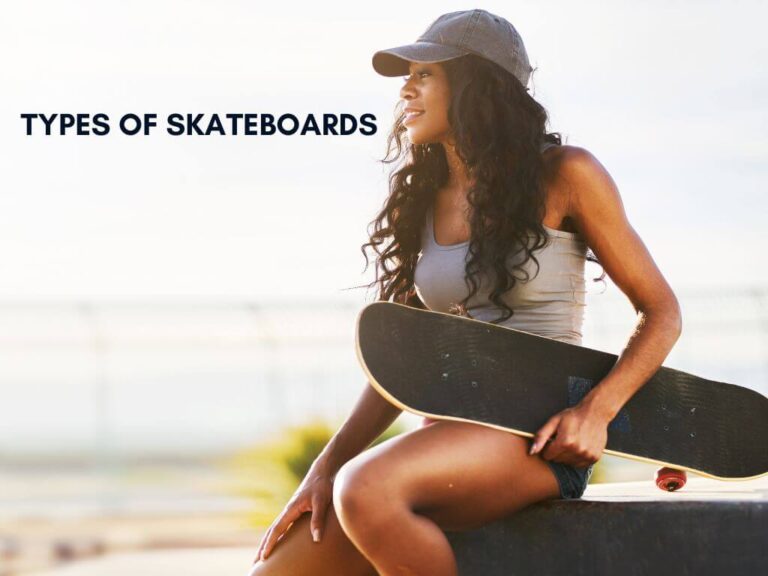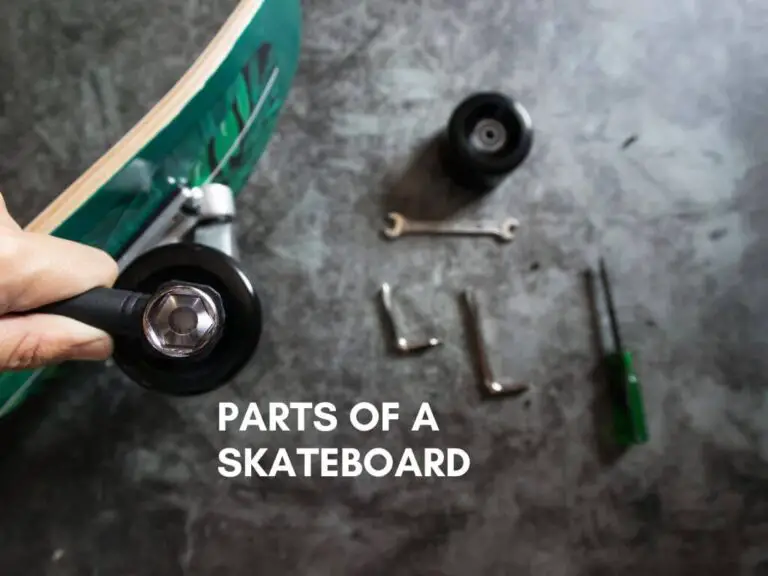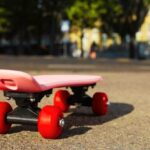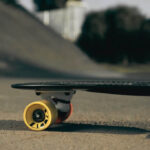Skateboarding is a fun and exciting sport that requires skill, technique, and the right gear. One of the most significant parts of your skateboard is the wheels. So, right now, the most common question is- how to choose skateboard wheels?. Right?
Well, there are many aspects to consider while purchasing skateboard wheels. Initially, your ride’s speed and stability depend on the wheel size. The wheel’s durometer, or hardness, impacts grip and tricks. Finally, wheel shape affects performance, with wheels having a greater grip and angular wheels having better glide.
We’ll discuss the different things you must consider when choosing skateboard wheels, like size , hardness, shape, and material. In fact, by the end of this post, you’ll have a clear understanding of how to select the right skateboard wheels for your skill level.
So, let’s roll on!
Factor to consider when choosing skateboard wheels!
Skateboarding is a thrilling sport that requires proper equipment to perform tricks and maneuvers. Among the most essential components of a skateboard are the wheels.
In fact, choosing the right skateboard wheels can significantly affect your performance and overall skating experience. With so many options available in the market, it can be overwhelming to make a decision. Right?
But no more worries! We have listed some of important factors to choose the skateboard wheels! Let’s go in depth!
Choosing a skateboard wheel size (diameter)
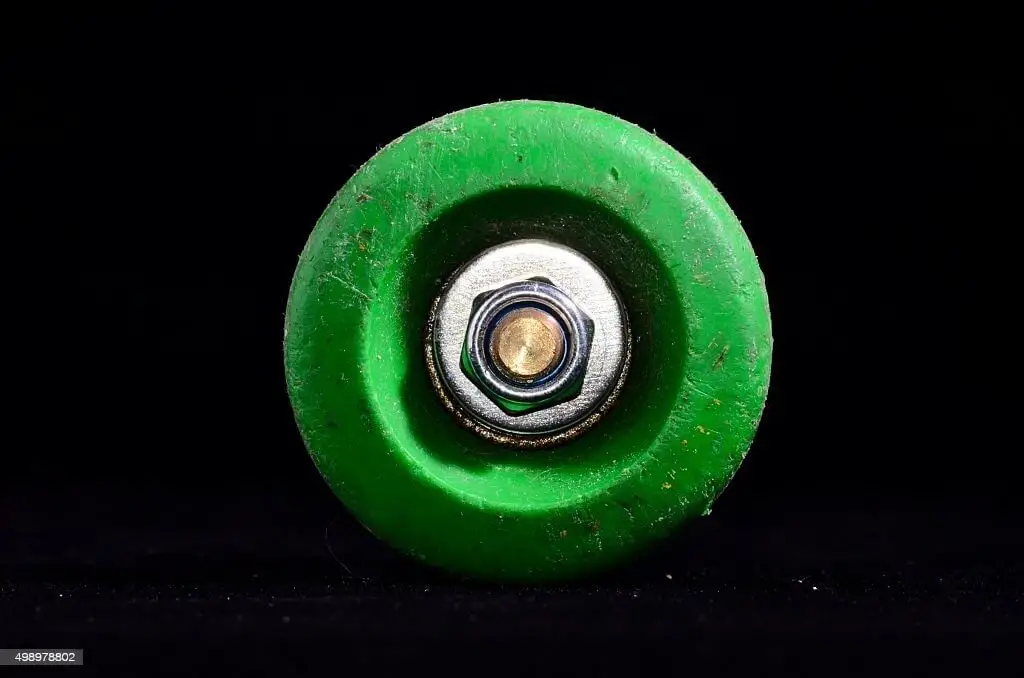
In skateboarding, wheel size directly impacts performance, control, and ride quality. The size of the skateboard wheel is measured in diameter, ranging from 49mm to 75mm.
Skateboard wheels come in three sizes:
- Small wheels (49mm to 53mm)
Important Features-
- Small wheels are typically used for street and park skating, as they provide better control and manoeuvrability for technical tricks.
- They are also lighter and easier to accelerate, making them an excellent choice for riders who prefer a faster, more agile ride.
- However, smaller wheels may not be as fast or comfortable on rougher terrain, as they do not absorb shocks, as well as larger wheels.
- Medium Wheels (54mm to 59mm)
Important Features-
- Skating on medium-sized wheels on the street, in the park, or while cruising through the city is possible.
- They provide a balance between speed and control.
- Making them an excellent choice for riders who like to perform technical tricks and cruising.
- They also provide better shock absorption than small wheels, making them suitable for riding on rougher terrain.
- Large Wheels (60mm to 75mm)
Important features-
- Larger wheels are typically used for snowboarding, cruising, and transportation. They provide a smoother and more comfortable ride on smooth surfaces.
- They are also faster than smaller wheels. Ideal for riders who prefer speed and stability over manoeuvrability.
- However, large wheels may not be suitable for technical tricks or riding on rough terrain, as they can be heavy and bulky.
Choosing a skateboard wheel hardness (durometer)
Skateboard wheels come in different hardness levels, which are measured in durometers. Durometer is a unit of measurement used to determine the hardness of various materials, including rubber and plastic.
Skateboard wheels are typically measured on the A-scale, which ranges from 1 to 100, with higher numbers indicating harder wheels.
Here’s a breakdown of the different levels of skateboard wheel durometers:
- 78A-87A (softest skateboard wheels ):
Features
- They are ideal for cruising, longboarding, and carving.
- Offer excellent grip and shock absorption,
- Suitable for rough surfaces and uneven terrain.
- They are slower and more durable than harder wheels.
- 88A-95A (medium-soft wheels ) :
- Features-
- Suitable for all-around skateboarding.
- They offer a good balance of grip and speed
- Ideal for street skating, parks, and ramps.
- They are also more durable than softer wheels.
3. 96A-99A( medium-hard wheels):
Features
- Suitable for smooth surfaces such as skate parks and smooth pavement.
- They offer good speed and durability,
- May not provide enough grip for rougher surfaces.
4. 100A-101A( hardest skateboard):
Features
- Wheels are ideal for technical street skating
- Riding on smooth surfaces.
- They offer the highest speed and durability
- May not provide enough grip for skating on rough surfaces.
Choosing a skateboard wheel shape
Skateboard wheel shape is an essential factor to consider when choosing wheels for your skateboard. Depending on the terrain and skating style, the shape of the wheel will affect its performance.
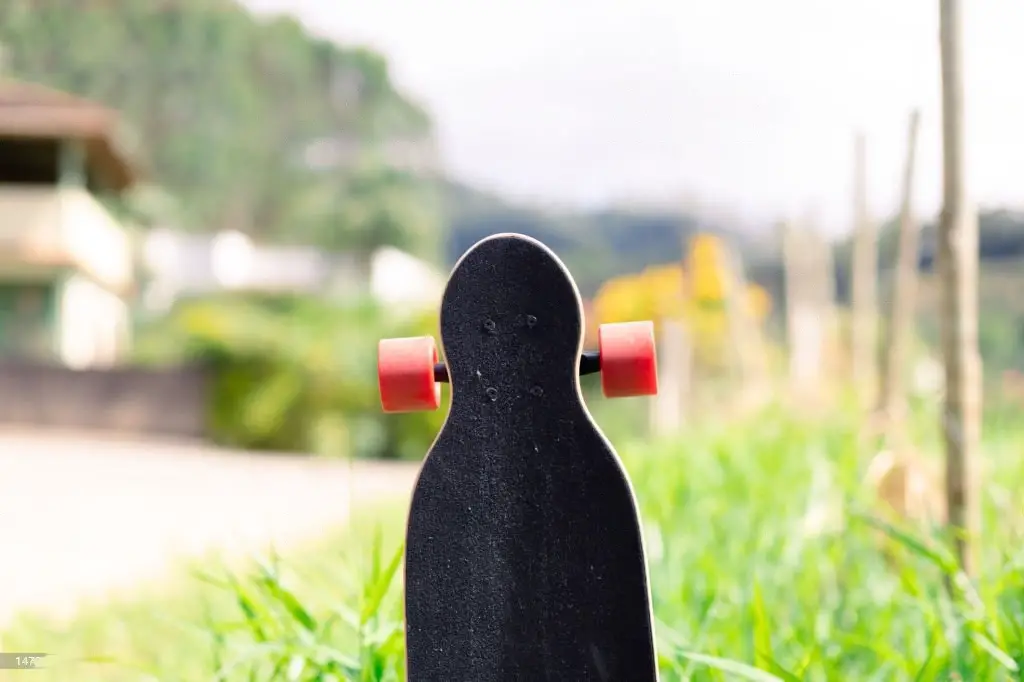
In terms of skateboard wheels, there are three main types:
- Round Wheels:
Round wheels are the most common shape for skateboard wheels. They have a smooth, rounded edge that provides a consistent contact patch with the ground.
Features
- They are versatile and work well for many types of skating, including cruising, carving, and street skating.
- Provide a good balance of grip and slide.
- A popular choice for many skaters.
2.Conical Wheels:
Conical wheels have a narrow contact patch at the top of the wheel and a wider contact patch at the bottom.
Features
- This shape allows the wheel to have a sharper turn and a smaller footprint, which Easier to perform technical tricks.
- Conical wheels are often used for street skating, where quick turns and precise movements are necessary.
3. Square Wheels:
Square wheels have a wider contact patch than round or conical wheels.
Features
- Provides more grip and stability.
- Ideal for downhill skating, where speed and control are crucial.
- Square wheels have a square edge that provides a consistent slide, which is Important for performing slides and other tricks that require a controlled drift.
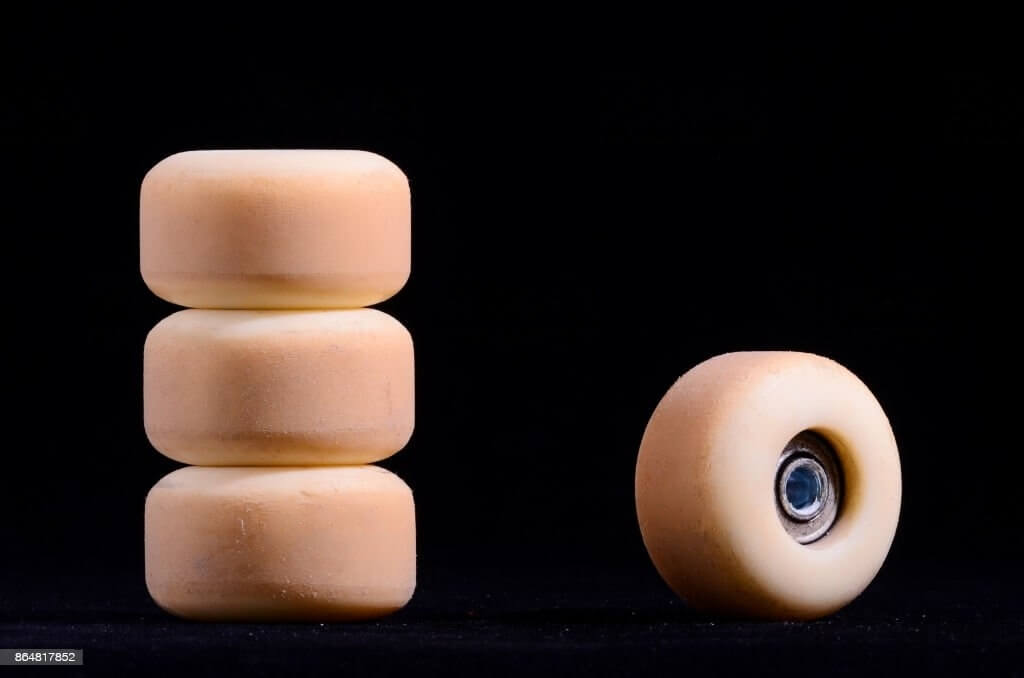
Choosing skateboard wheels contact patch
The contact patch of a skateboard wheel is the area where the wheel makes contact with the ground while riding. This area is important because it affects the amount of grip the wheel has. Infact, it can impact the overall performance of the skateboard.
However, The size of the contact patch is determined by several factors, including-
- The diameter of the wheel
- The shape of the wheel
- The weight and pressure of the rider.
In general, a larger contact patch will provide more grip, while a smaller contact patch will provide less grip but will be more manoeuvrable.
Features-
Here are some features of the contact patch of a skateboard wheel:
- The contact patch is where the wheel touches the ground while riding.
- A larger contact patch will provide more grip, while a minor contact patch will provide less grip but will be more manoeuvrable.
- The shape of the contact patch can also affect the performance of the skateboard. With square contact patches providing more grip and stability. On the other hand, rounded contact patches being more maneuverable and allowing for easier slides.
- The wheel’s durometer (hardness) can impact the contact patch’s size and shape. With softer wheels creating a larger contact patch and providing more grip. Aside from that, harder wheels create a smaller contact patch and provide less grip.
- The surface of the road or terrain being ridden on can also affect the size and shape of the contact patch, with rougher surfaces creating a smaller contact patch and smoother surfaces creating a larger contact patch.
- The contact patch is a crucial element in determining the performance of the skateboard, and riders can choose wheels that will provide the desired level of grip and manoeuvrability for their particular riding style by understanding how these factors interact.
How to Choose Skateboard Wheels? Some other factors
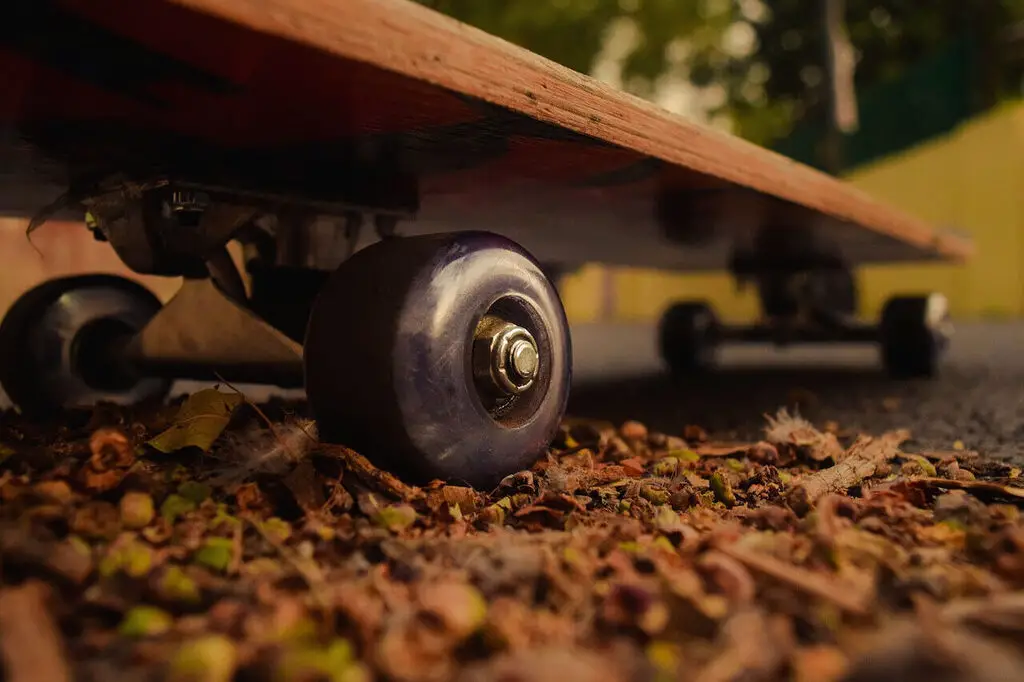
When choosing skateboard wheels, there are some other factors to consider, including:
- Core placement:
Skateboard wheels can have a centre-set, side-set, or offset core placement. This affects how the wheel wears over time and performs during slides.
Wheel Material:
Skateboard wheels can be made from a variety of materials, including polyurethane, urethane, and plastic. Polyurethane is the most common and durable material used for skateboard wheels.
Wheel colour:
Skateboard wheels come in various colors, which can add to the overall look of your skateboard. However, it’s important to remember that color doesn’t affect the wheel’s performance.
Lip shape:
The lip shape refers to the curvature of the wheel’s edge. Sharp lips provide better grip and are ideal for carving, while rounded lips are better for sliding.
Riding style:
Your riding style will also play a role in choosing the right skateboard wheels. If you’re a beginner or prefer cruising, you may want larger, softer wheels. If you’re an experienced skater who does a lot of tricks and slides, you may prefer smaller, harder wheels.
Terrain:
The type of terrain you’ll be skating on will also affect your choice of skateboard wheels. Smaller, harder wheels are better for smooth surfaces like skate parks. While larger, softer wheels are better for rougher terrain like streets and sidewalks.
Brand and quality:
There are many different skateboard wheel brands on the market, and the quality can vary widely. Choose a reputable brand that is known for producing high-quality wheels.
Price:
Skateboard wheels can range in price from very cheap to very expensive. In comparison, you don’t necessarily need to break the bank to get a good set of wheels. Investing in a quality set that will last you a while is essential.
Personal preference:
The choice of skateboard wheels will come down to your personal preference. Try out different sizes, shapes, and durometers to see what feels best for you and your skating style.
Last words
Ultimately, choosing the right skateboard wheels is crucial for a smooth and enjoyable ride. Consider factors such as size, durometer, and shape to determine the best wheels for your skateboarding style and preferences.
Besides, How to Choose Skateboard Wheels? experiment with different types of wheels to find the perfect match for your riding needs. Remember that selecting the right wheels can make a significant difference in your overall skateboarding experience. So take the time to make an informed decision.
FAQ’s
Can I mix and match different types of skateboard wheels on my board?
t is possible to mix and match different types of skateboard wheels on your board. But it is important to consider certain factors before doing so. Mixing wheel diameters can affect ride stability and wear. Hardness also affects grip and speed.
What materials are used to make skateboard wheels, and how do they affect performance?
Skateboard wheels can be made from a variety of materials, including polyurethane, plastic, and rubber. Polyurethane is the most popular material. It provides a balance of durability, grip, and slide. Plastic and rubber wheels are less common and provide different levels of grip and durability.
What is the recommended wheel size for a skateboard?
The recommended wheel size for a skateboard depends on your riding style and preference. For street skating and tricks, smaller wheels around 50-54mm are recommended, while larger wheels between 55-60mm are better for cruising and transportation.
How do I know if I need harder or softer wheels?
The durometer of the wheel you choose depends on your riding style and preferences. Softer wheels are better for cruising and rough surfaces as they provide better grip and a smoother rideOn the other hand, harder wheels are better for tricks and sliding.
What are the different types of wheel cores?
Well, there are two types of wheel cores: center set and offset.
Center-set wheels have their hub located in the center of the wheel, while offset wheels have their hub placed slightly towards the inside of the wheel. The type of core affects the speed, grip, and slide of the wheel.
Can I ride skateboard wheels on rough terrain?
Yes, you can ride skateboard wheels on rough terrain. However, larger and softer wheels are perfect for a smoother ride and better grip on rough surfaces.
Which shape of skateboard wheels is best for me?
Skateboard wheels come in various shapes, including square-edged, conical, and round-edged. Square-edged wheels offer more surface area and stability, while conical wheels provide better maneuverability. Round-edged wheels provide a balanced combination of both.



